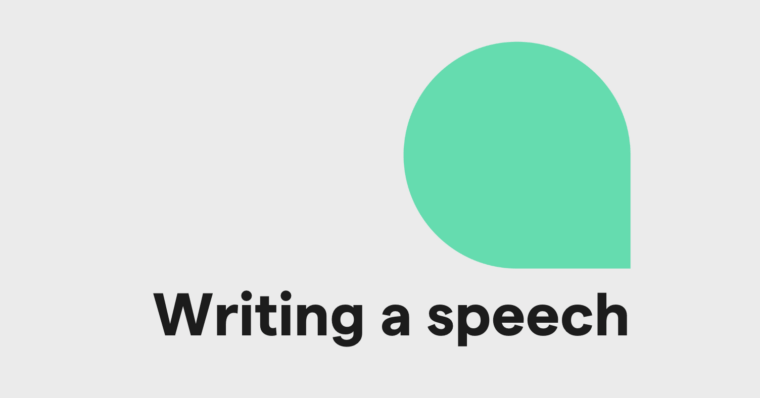
Like a scene in a movie or a verse in a song, paragraphs are the building blocks of any good piece of writing. Paragraphs lend a natural rhythm to your writing that makes it a joy to read. The question is, how do you handle them successfully?
Below, we take a close look at what makes up an effective paragraph and explain how to write one that suits your needs. We also cover some advanced tips. But first, let’s start with the fundamentals.
What is a paragraph?
Simply put, a paragraph is a collection of sentences all related to a central topic, idea, or theme. Paragraphs act as structural tools for writers to organize their thoughts into an ideal progression, and they also help readers process those thoughts effortlessly. Imagine how much harder reading and writing would be if everything was just one long block of text.
There’s a lot of flexibility when it comes to writing paragraphs, but if there’s one steadfast rule, it’s this: Paragraphs should relate to one main topic or point. The paragraph itself often contains multiple points spanning several sentences, but they should all revolve around one core theme. Just as sentences build upon each other to communicate the paragraph’s core theme, paragraphs work together to communicate the core theme of the writing as a whole.
That’s the basic idea, but in practice there’s more to it. Let’s look at the four main types of paragraphs to learn how and when to use them.
Expository paragraphs
Essays, academic papers, and journalistic articles mainly use expository paragraphs to thoroughly explain an individual point. These paragraphs rely on data, statistics, or citations from other sources to present facts and build up to an irrefutable conclusion.
Descriptive paragraphs
Common in fiction and certain styles of journalistic or other nonfiction writing, a descriptive paragraph contains various details of the same thing, with each sentence adding new insight. A paragraph in a horror novel might describe how it feels walking around the woods alone; a love letter’s paragraph might focus on the details of your significant other’s eyes. No matter the context, descriptive paragraphs are meant to provide the clearest picture of your subject.
Persuasive paragraphs
For editorials and opinion pieces, persuasive paragraphs are meant to convince the reader of a specific point, with each sentence presenting evidence or reasoning to support that point. Like expository paragraphs, persuasive paragraphs may contain data and statistics, but here, these work to support an opinion rather than verify a fact. The trick to writing persuasive paragraphs is knowing how to assert your opinion without sounding preachy.
>>Read More: How to Write a Persuasive Essay
Narrative paragraphs
If you’re telling a story, fiction or nonfiction, you’ll need to break up the action into digestible segments so your reader doesn’t get confused. That’s the purpose of narrative paragraphs: they break up sequential actions into related chunks, with one leading into the next, so that the reader can remain focused on the storyline. They don’t use evidence or supporting arguments like the other paragraph types, but they still abide by the main rule of paragraphs about unity.
How to write a paragraph
Knowing the different types of paragraphs is helpful for outlining a piece, but it doesn’t tell you how to write one.
Let’s move on to some hands-on tips for writing a perfect paragraph, starting with a sample written in the academic paragraph structure of essays and school papers:
Despite the typos we see in texts and social media, professional environments still value good grammar. For hiring managers, a command of grammar offers honest insight into an applicant’s intelligence, dedication, attention to detail, and professionalism, not to mention communication skills. Good grammar can even land you that promotion: According to a 2013 study, professionals who have been promoted six to nine times made 45 percent fewer grammar mistakes than those promoted one to four times. Learning the difference between there, their, and they’re isn’t just about speaking properly—it’s also a good career move!
Academic paragraphs use a simple-but-efficient structure consisting of four parts:
1. Topic sentence
Despite the typos we see in texts and social media, professional environments still value good grammar.
Also known as the “paragraph leader,” your topic sentence should introduce the concept and communicate what the paragraph is about. Be careful not to squeeze your entire point into this first sentence—you just need to say enough so that the reader knows what the rest will be about.
2. Development
For hiring managers, a command of grammar offers honest insight into an applicant’s intelligence, dedication, attention to detail, and professionalism, not to mention communication skills.
Your second and maybe third sentences are where you elaborate on your point. All the nonessential information that didn’t fit in your topic sentence goes here. The goal is that the reader fully understands the point, so feel free to include citations or assertions from other sources for stronger communication.
3. Support
Good grammar can even land you that promotion: According to a 2013 study, professionals who have been promoted six to nine times made 45 percent fewer grammar mistakes than those promoted one to four times.
Here’s where you get down to brass tacks: Present your evidence, data, statistics, logical conclusions, persuasive opinion, real-life or hypothetical examples, etc.—anything that confirms your initial statement.
4. Summary
Learning the difference between there, their, and they’re isn’t just about speaking properly—it’s also a good career move!
Last, you want to end by summing up or evaluating your main point—what conclusion can your reader draw from your argument? In addition to wrapping things up, your summary should also follow the best practices for writing conclusions.
Advanced tips for writing paragraphs
How long should a paragraph be?
There are no hard limits to how long or short a paragraph can be, but typically three to five sentences will suffice. Sometimes you may opt for only a single sentence to add emphasis or effect, while other times you’ll need more than five sentences to present all your evidence. Use your discretion—but err on the side of too short instead of too long.
Parallel structure
In sentence construction, parallelism refers to using consistent structure between two clauses or phrases (i.e., saying I prefer trains over buses instead of I prefer trains over a bus). That same principle applies to paragraphs within a greater text: Each paragraph should have a similar structure for the sake of consistency.
Parallelism is crucial when writing about comparisons or using a point-counterpart format. If you’re comparing two or more arguments, it’s best to maintain the same structure for both arguments (and the paragraphs that explain them). Typically, the two most common formats are known as block and point-by-point.
Let’s say you’re writing an essay comparing apples and oranges. Block structure would use an individual paragraph discussing everything about apples—taste, appearance, etc.—and then follow it with another individual paragraph discussing those same attributes for oranges.
Point-by-point structure, however, would mix it up a little. The first paragraph might center around taste and include data about both apples and oranges. Then the second paragraph would move on to a new point, like appearance, and would likewise include information on both apples and oranges.
Neither format is inherently better than the other—the best choice depends on the topic and context. The important thing is that you stick with your choice throughout the entire piece; switching randomly between formats is considered poor writing.
Transitions
One of the hardest parts of writing involves transitions. Good writing appears seamless, flowing from one point to another. But what do you do if the individual points on their own are disjointed or unrelated? That’s when transitions come in handy—they’re a way to move to a new point without being abrupt or jarring.
Basic transitions can be as simple as adding linking words to the beginning of a sentence: however, by contrast, in addition, on the other hand, etc. If you’re creating a list, you can link each item together using ordinals (first, second, etc.) or more casual connectors like for starters, next, and last. The same rules for transitioning from sentence to sentence apply just as well when transitioning from paragraph to paragraph.





